| Husky of the Month |
Congrats Nikita, Archer, and Cheyanne,our November HOTM Winners!
Husky Cuddles!
  Thanks to all for this month's entries!
|
| Forum Rules | 1. Here we prefer clarity to agreement. Obviously not everyone is going to agree on a topic; here we prefer to talk out our differences in a respectful manner to ensure mutual understanding and respect.
2. Read the Stickies and Announcements. Each sub-forum may have specific rules which trump the Forum Rules in cases where there may be conflicting information. Read the rules of each board before you post so that you are clear on the expectations of the staff.
3. Respect ALL Staff and Admins. These people volunteer of their time and MUST be respected as well as their word adhered to. They are responsible for maintaining a free, open, clear and organized forum. Anyone found to be openly undermining any official ruling by a staff member will be warned.
4. Signatures: One picture only and no links. Images: To keep the forum looking neat and tidy, we ask that members insert just one picture only in their signatures. The picture should be no more than 200x500 pixels and should be of an appropriate subject, for example, your dogs and their names. Should you need assistance creating an appropriate signature, please PM an Admin and we would be happy to help! This is to ensure that signatures remain a welcome addition to our forum instead of a cumbersome distraction. Links: Hyperlinks in signatures--unless to a personal blog or photo stream of your dogs (like Flckr or Piscasa, for example)--are strictly prohibited. Please PM a staff member with any questions or concerns regarding this rule. |
| Rescue Spotlight |
Our current rescue spotlight is:
Delaware Valley Siberian Husky Rescue!

|
| Top Dog Website Award Winner! | |
|
| | Author | Message |
|---|
suki243
Newborn

Join date : 2012-06-22
 |  Subject: Help Dog Attack! Subject: Help Dog Attack!  Thu Nov 01, 2012 4:35 pm Thu Nov 01, 2012 4:35 pm | |
| This morning my friend took her Italian greyhound and shih tzu on a walk. The same walk they've taken for the last six years. Today however in front of a large house the where they keep six large breed dogs (German Shepards and what not) they left the gate open. 4 of the 6 came rushing out towards my friend and the two dogs. She was able to pull the greyhound away cause he has a harness. The other was pretty badly mauled. The shih tzu was able to slip out of its collar and run down the street where it finally collapsed but still alive. The owner came out and said sorry and took the dogs back to be locked up. She then was on the phone on looking the scene, leaving my friend (who didn't have a phone) to fend for herself. She was able to flag down a car and was able to call a family member and call the police. The police said there was nothing that could be done since now the owner of the dogs said that my friend's two dogs came onto her property and then ran off.
Now the vet said the shih tzu has a 50% chance to live and the surgery will be 8k and the greyhound will have 800+$ in surgeries as well. They don't have pet insurance, but the police said all they can do is take it to court.
Is that true? I'm a first time dog owner and this is the first time I've come across an issue like this. What could their options be? is there anything that could help them with vet bills if the other party decides not to pay at all? Or is the only way via a court system?
Thanks in advance,
Suki |
|   | | jbealer
Husky Stalker

 Join date : 2009-05-29 Join date : 2009-05-29
Location : Denver, CO
 |  Subject: Re: Help Dog Attack! Subject: Re: Help Dog Attack!  Thu Nov 01, 2012 5:08 pm Thu Nov 01, 2012 5:08 pm | |
| well my mom and her small dog got attacked a few weeks ago because a dog dug out of the yard. that dog got put down and my mom got a lawyer to sue the lady to pay hers and the dogs medical bills, she does not want any more money other then the bills taken care of. she charged everything to one CC so that it is on record and will fight to have it taken care of since the owner of the attacking dog did not offer a thing.
im sorry your friend had this happen, most of the time the cops cant do much in a he said she said kind of event with no witness. _________________  |
|   | | hypers987
Senior

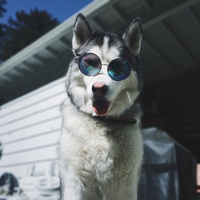
 Join date : 2011-08-25 Join date : 2011-08-25
Location : Santa Cruz, California
 |  Subject: Re: Help Dog Attack! Subject: Re: Help Dog Attack!  Thu Nov 01, 2012 5:24 pm Thu Nov 01, 2012 5:24 pm | |
| If her dogs were not contained and not on leashes, then the other owner is at fault. I would pursue this. Police officers always don't make a big deal about dog attacks and the like. The other owner, herself, is a witness if she saw what her dogs were doing and came and got them. Just the other day, two aggressive chocolate labs were out loose and were stalking Kale, Violet and I on a walk. Thankfully, when things were getting hairy (didn't have my mace on me that day  of course...) two cars pulled up and saves us. One of the guys called AC and the lady on the phone pretty much said "Too bad" and hung up on him. It was crazy ridiculous. I drove by later on in the day on my way to my boyfriends and they were still on the prowl in the dark. Hopefully no one was walking down that street that night  |
|   | | LillDragun
Teenager

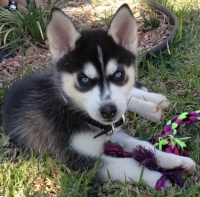
 Join date : 2012-04-24 Join date : 2012-04-24
Location : CC,TX
 |  Subject: Re: Help Dog Attack! Subject: Re: Help Dog Attack!  Thu Nov 01, 2012 7:35 pm Thu Nov 01, 2012 7:35 pm | |
| I'm so sorry about that! That is horrible! Scary enough, but what I do when I go walking is I go packing heat, for the obvious reasons, or I carry a golf club with me "just in case". I know Mia would NOT be able to defend herself, she is a wuss when it coms to confrontation. So, just in case, I have something that I can defend the both of us with. But I almost never leave my home without something to defend myself with. Call me paranoid, but you won't catch me bringing a knife to a gunfight. |
|   | | Jennet&Embry
Senior


 Join date : 2010-09-15 Join date : 2010-09-15
Location : Eau Claire, Wisconsin
 |  Subject: Re: Help Dog Attack! Subject: Re: Help Dog Attack!  Thu Nov 01, 2012 9:01 pm Thu Nov 01, 2012 9:01 pm | |
| I would call Animal Control if the police will not help her, your friend is not at fault for it, the other owner is. There's obvious proof. |
|   | | 26nikita
Senior

 Join date : 2010-09-11 Join date : 2010-09-11
 |  Subject: Re: Help Dog Attack! Subject: Re: Help Dog Attack!  Thu Nov 01, 2012 9:05 pm Thu Nov 01, 2012 9:05 pm | |
| That's horrible! This just makes me angry that your friend is going through this. She needs to pursue this in court and nail that lady! |
|   | | Wintergreen
Newborn

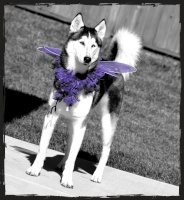
 Join date : 2012-10-24 Join date : 2012-10-24
Location : Gilroy, California
 |  Subject: Re: Help Dog Attack! Subject: Re: Help Dog Attack!  Thu Nov 01, 2012 9:59 pm Thu Nov 01, 2012 9:59 pm | |
| - 26nikita wrote:
- That's horrible! This just makes me angry that your friend is going through this. She needs to pursue this in court and nail that lady!
I totally agree! This makes me feel so terrible for your friend. I would definitely pursue this in court. I wish the best for her and her dogs  . |
|   | | MelissaI
Senior

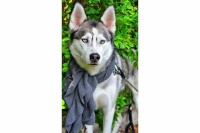
 Join date : 2010-10-01 Join date : 2010-10-01
Location : Miami,FL
 |  Subject: Re: Help Dog Attack! Subject: Re: Help Dog Attack!  Thu Nov 01, 2012 10:05 pm Thu Nov 01, 2012 10:05 pm | |
| S**t like this really scares me when walking the pups. I'm constantly looking around.
I'm so sorry that your friend is going through this. I completely agree with everybody else. She needs to go after that stupid lady! |
|   | | suki243
Newborn

Join date : 2012-06-22
 |  Subject: Re: Help Dog Attack! Subject: Re: Help Dog Attack!  Fri Nov 02, 2012 5:09 am Fri Nov 02, 2012 5:09 am | |
| Thank you for all your support and suggestions, they ended up going through with both the surgeries and the greyhound is doing very well but is extremely scared of any dog larger than him. The Shih tzu is still in critical condition but she survived the surgery, she's going to be at the vet for the next week or so. They decided to have the vet bill delivered to the attacker's house via their lawyers. Hopefully it won't get messy enough to have to go to court.
I told her to thoroughly document the scene since the police didn't care to file any sort of report not even an informational one. I advised her to also call AC but she's been so distraught I'll try and figure something out though.
Thanks again,
-Suki |
|   | | SiberianAnubis
Adult

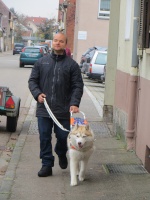
 Join date : 2010-11-09 Join date : 2010-11-09
Location : Stuttgart, Germany
 |  Subject: Re: Help Dog Attack! Subject: Re: Help Dog Attack!  Fri Nov 02, 2012 10:38 am Fri Nov 02, 2012 10:38 am | |
| I think without a lawyer the chances of getting this solved aren´t very high. Of course I can only speak for Gemrany but I´m sure there ain´t a big difference on that in the US |
|   | | libbybell74
Adult

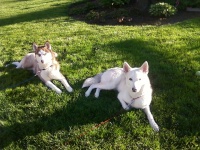
 Join date : 2011-10-06 Join date : 2011-10-06
Location : Brownsville, WI
 |  Subject: Re: Help Dog Attack! Subject: Re: Help Dog Attack!  Fri Nov 02, 2012 10:56 am Fri Nov 02, 2012 10:56 am | |
| I am so sorry this happened. I hope both dogs survive and are not too tramatized. This needs to be pursued at all lengths.
Who the hell just says "sorry" and walks away as your dogs mauled to other animals. This lady should be locked up as well.
I am keeping my fingers crossed and prayers said for all involved. |
|   | | suki243
Newborn

Join date : 2012-06-22
 |  Subject: Re: Help Dog Attack! Subject: Re: Help Dog Attack!  Thu Nov 22, 2012 6:31 am Thu Nov 22, 2012 6:31 am | |
| Thank you all for your support, the two dogs are doing well and are slowly but surely healing. the shih tzu had to go through a couple different treatment plans before they found one that worked in regards to the draining of the fluids. My friend and her family are sending the owners of the attacking dogs the bill via their lawyers, haven't heard anything about their responses just yet. |
|   | | Erinc
Teenager

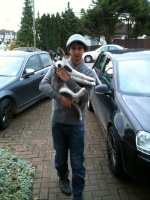
Join date : 2011-11-12
 |  Subject: Re: Help Dog Attack! Subject: Re: Help Dog Attack!  Thu Nov 22, 2012 8:35 am Thu Nov 22, 2012 8:35 am | |
| So sorry that this happened to your friend! I can't imagine how upset/angry they must be!! Glad to hear both dogs are doing well and hope that stupid woman get whats coming to her!
I can't believe she didn't stay with your friend and offer to help out in any way! Thats just ridiculous! |
|   | | Hayden_69
Senior

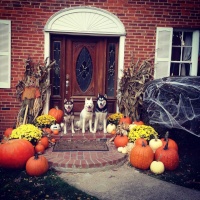
 Join date : 2011-12-26 Join date : 2011-12-26
Location : Alexandria, VA
 |  Subject: Re: Help Dog Attack! Subject: Re: Help Dog Attack!  Thu Nov 22, 2012 9:12 am Thu Nov 22, 2012 9:12 am | |
| I'm so glad their dog's are having a good recovery! I hope you're friend seeks justice for what happened. Such a shame some people can be so irresponsible with their dog's and allow a lovely beed like the GSD to get a bad rep, because of the owners stupidity. Poor things  |
|   | | Niraya
Breeding Subject Moderator

 Join date : 2011-08-30 Join date : 2011-08-30
Location : Easton, Pennsylvania
 |  Subject: Re: Help Dog Attack! Subject: Re: Help Dog Attack!  Thu Nov 22, 2012 11:27 am Thu Nov 22, 2012 11:27 am | |
| I'm terribly sorry to hear such a thing happen but I am incredibly glad the dogs are on the mend and recovering!
In PA our leash law states very specifically that any dog must be under the control of a it's handler or another person via voice or lead at -all- times. Such an incident here your friend would do very well going to court. Maybe where you live your leash law (if there is one) is similar and could be used as grounds?
_________________   |
|   | | reyeskid
Newborn

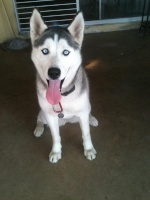
 Join date : 2012-11-17 Join date : 2012-11-17
Location : Covina, California
 |  Subject: Re: Help Dog Attack! Subject: Re: Help Dog Attack!  Thu Nov 22, 2012 7:04 pm Thu Nov 22, 2012 7:04 pm | |
| - LillDragun wrote:
- I know Mia would NOT be able to defend herself, she is a wuss when it coms to confrontation.
Your dog isn't a wuss she just recognizes that you're the pack leader and expects you to do your job. I wish my nala did the same but then again i only got her yesterday |
|   | | Erinc
Teenager


Join date : 2011-11-12
 |  Subject: Re: Help Dog Attack! Subject: Re: Help Dog Attack!  Thu Nov 22, 2012 7:45 pm Thu Nov 22, 2012 7:45 pm | |
| - reyeskid wrote:
- LillDragun wrote:
- I know Mia would NOT be able to defend herself, she is a wuss when it coms to confrontation.
Your dog isn't a wuss she just recognizes that you're the pack leader and expects you to do your job. I wish my nala did the same but then again i only got her yesterday This isn't very accurate... A dog, if threatened, will either freeze, fight or flight... It will not look to its "pack leader" for help... In fact, if you interfere with a dog fight and are bitten, it is likely that you will back off, by doing this, you are undermining yourself & causing your status as the "alpha male" to be questioned... Pack order is not only determined by physical strength but also personality... A dog who is more aggressive will most certainly gain a higher order in the pack! If your dog is submissive or a "wuss" it isn't because she expects you to fight his or her battles, it is because she is genuinely a wuss... There is nothing wrong with that. Not all dogs were born to be pack leaders, not all dogs were born to fight! |
|   | | xredrainx
Teenager


 Join date : 2012-05-24 Join date : 2012-05-24
Location : Georgetown, On Canada
 |  Subject: Re: Help Dog Attack! Subject: Re: Help Dog Attack!  Thu Nov 22, 2012 7:51 pm Thu Nov 22, 2012 7:51 pm | |
| - Erinc wrote:
- reyeskid wrote:
- LillDragun wrote:
- I know Mia would NOT be able to defend herself, she is a wuss when it coms to confrontation.
Your dog isn't a wuss she just recognizes that you're the pack leader and expects you to do your job. I wish my nala did the same but then again i only got her yesterday
This isn't very accurate... A dog, if threatened, will either freeze, fight or flight... It will not look to its "pack leader" for help... In fact, if you interfere with a dog fight and are bitten, it is likely that you will back off, by doing this, you are undermining yourself & causing your status as the "alpha male" to be questioned...
Pack order is not only determined by physical strength but also personality... A dog who is more aggressive will most certainly gain a higher order in the pack! If your dog is submissive or a "wuss" it isn't because she expects you to fight his or her battles, it is because she is genuinely a wuss... There is nothing wrong with that. Not all dogs were born to be pack leaders, not all dogs were born to fight! That's actually very interesting. |
|   | | Niraya
Breeding Subject Moderator

 Join date : 2011-08-30 Join date : 2011-08-30
Location : Easton, Pennsylvania
 |  Subject: Re: Help Dog Attack! Subject: Re: Help Dog Attack!  Thu Nov 22, 2012 8:45 pm Thu Nov 22, 2012 8:45 pm | |
| The "Alpha theory" is extremely outdated. It also is in line with the "dominance theory" which is forcing your dog to submit to you to make them see you as the "alpha". However - this all very outdated, the study from which the information came from was proven bunk because wild wolves act incredibly different than captive wolves - which is what the study was based on.
Aggression in a wolf pack will actually not earn the wolf a higher ranking within the pack but most likely the wolf will be cast out. There is no place for aggression in a wolf pack as it is a highly social pecking order. The "alpha" wolves in a wolf pack are not the most aggressive or biggest etc. They are actually in fact just the parents (in most cases) and the offspring continue to make up the pack and they'll often take in loners. Wolf packs (when wolves were in fact very populated) were not big. Mostly about 10 or less wolves simply because there is often not enough big game in abundance and often enough (after migration) to support a large pack. Food supply dictates size.
Moving on - Domestic dogs maintain a "pack mentality" - yes - AMONG other dogs. Dogs know that humans are not dogs. Dogs are opportunistic - which is why whenever someone has food - the dog will listen or go to them for the food and do as they are asked. It's conditioning - it is not necessarily the hierarchy or "pack" order - it's opportunity.
That's why the "alpha/dominance theory" states "Never play tug-of-war with your dog - you'll make it aggressive and they'll dominate you". "never let the dog on the furniture - they'll start to claim it as their own and try to overthrow you as the alpha" "MAKE your dog watch you eat because the alpha always eats first" "You ALWAYS go through the door first to show your dog who is alpha". No. These are all misconceptions. The dog doesn't care. The human ideal of "pack theory" is really just a mutual respect between the dog and the human (this means in cases where people aren't actually applying the alpha theory rules to their dog).
I let my dog on my bed, she sleeps on every piece of furniture that she wants, she gets up on them without being told, she eats before me, she goes out the door before me AND I play tug-of-war with her multiple times a day. At the end of the day - it is the respect that she has for me and that I have for her that makes her want to come up, curl up in her husky ball as close as she can get to me and go to sleep at night. Not because I am her "alpha". _________________   |
|   | | Erinc
Teenager


Join date : 2011-11-12
 |  Subject: Re: Help Dog Attack! Subject: Re: Help Dog Attack!  Thu Nov 22, 2012 8:57 pm Thu Nov 22, 2012 8:57 pm | |
| - Niraya wrote:
- The "Alpha theory" is extremely outdated. It also is in line with the "dominance theory" which is forcing your dog to submit to you to make them see you as the "alpha". However - this all very outdated, the study from which the information came from was proven bunk because wild wolves act incredibly different than captive wolves - which is what the study was based on.
Aggression in a wolf pack will actually not earn the wolf a higher ranking within the pack but most likely the wolf will be cast out. There is no place for aggression in a wolf pack as it is a highly social pecking order. The "alpha" wolves in a wolf pack are not the most aggressive or biggest etc. They are actually in fact just the parents (in most cases) and the offspring continue to make up the pack and they'll often take in loners. Wolf packs (when wolves were in fact very populated) were not big. Mostly about 10 or less wolves simply because there is often not enough big game in abundance and often enough (after migration) to support a large pack. Food supply dictates size.
Moving on - Domestic dogs maintain a "pack mentality" - yes - AMONG other dogs. Dogs know that humans are not dogs. Dogs are opportunistic - which is why whenever someone has food - the dog will listen or go to them for the food and do as they are asked. It's conditioning - it is not necessarily the hierarchy or "pack" order - it's opportunity.
That's why the "alpha/dominance theory" states "Never play tug-of-war with your dog - you'll make it aggressive and they'll dominate you". "never let the dog on the furniture - they'll start to claim it as their own and try to overthrow you as the alpha" "MAKE your dog watch you eat because the alpha always eats first" "You ALWAYS go through the door first to show your dog who is alpha". No. These are all misconceptions. The dog doesn't care. The human ideal of "pack theory" is really just a mutual respect between the dog and the human (this means in cases where people aren't actually applying the alpha theory rules to their dog).
I let my dog on my bed, she sleeps on every piece of furniture that she wants, she gets up on them without being told, she eats before me, she goes out the door before me AND I play tug-of-war with her multiple times a day. At the end of the day - it is the respect that she has for me and that I have for her that makes her want to come up, curl up in her husky ball as close as she can get to me and go to sleep at night. Not because I am her "alpha". I completely agree for the most part, although, in a lot of cases, where captive packs have been studied, a lone wolf casts itself out from a pack in the hopes of finding one more "suitable"... Aggression amongst an age group does assert dominance and yes the parents are more than often the alpha male and female, but what determines the rest of the pack order amongst the first littler for example? It is size and it is personality and they establish this whilst playing... I also disagree with your second to last paragraph, dogs realise we are not dogs, that's not to say that making sure you keep the toy at the end of a game of tug of war or eat yourself before feeding your pup is ignored... They see this and they understand it the same way they would within a pack... It's just that it's not necessary as there are other ways for you and your dog to establish a degree of respect for each other such as through training. |
|   | | Niraya
Breeding Subject Moderator

 Join date : 2011-08-30 Join date : 2011-08-30
Location : Easton, Pennsylvania
 |  Subject: Re: Help Dog Attack! Subject: Re: Help Dog Attack!  Thu Nov 22, 2012 9:34 pm Thu Nov 22, 2012 9:34 pm | |
| "The theory that a hierarchy based on dominance relationships is the organizing principle in social groups of the sort canis
lupus is a human projection that needs replacing. Furthermore, the model has unjustifiably been transferred from its original
place in the discussion of the behavior of wolves to the discussion of the behavior of domestic dogs (canis familiaris). This
paper presents a new, more adequate model of how familiaris organizes itself when in groups. This paper is based on a
longitudinal study of a permanent group of five randomly acquired dogs living in their natural habitat, as they interact with
each other within the group, with newcomers of various species who joined the group, and with fleetingly met individuals of
various species in their outside environment. This study shows that the existence of the phenomenon "dominance" is
questionable, but that in any case "dominance" does not operate as a principle in the social organization of domestic dogs.
Dominance hierarchies do not exist and are in fact impossible to construct without entering the realm of human projection
and fantasy. The hypotheses were tested by repeatedly starting systems at chaos and observing whether the model
predicted the evolution of each new system. The study shows that domestic canine social groups must be viewed as
complex autopoietic systems, whose primary systemic behavior is to gravitate as quickly as possible to a stable division of
the fitness landscape so that each animal present is sitting on a fitness hill unchallenged by other group members.
Aggression is not used in the division of the fitness landscape. It is not possible for an observer to measure the height of
respective hills. There is no hierarchy between or among the animals. The organization of the system is based on binary
relationships, which are converted by the agents as quickly as possible from competitive to complementary or cooperative
binaries, through the creation of domains of consensus. The production processes by which this is done are twofold. The
first is an elegant and clear, but learned, system of communicative gestures which enables the animals to orient themselves
adequately to each other and emit appropriate responses in order to maintain or restore the stability of their fitness hills and
the larger social landscape. The second is learning. It is the learning history of each animal, which determines how
adequately the animal can operate within the system and what the components of its individual fitness hill will be, and which,
in the end, is more crucial to the animal’s survival than even presumed genetic factors or some human-constructed
“dominance” position."
"But it was, in the first place, not correct to apply a model developed watching wolves to the behavior of domestic dogs.
Though it has become clear that domestic dogs share a common ancestor with the wolf, the genetic similarity is a weak
basis for assuming that models derived from the studies of wolves are applicable to the behavior of domestic dogs or
adequate to understand, explain or predict the behavior of the latter. It is clear that wolves and domestic dogs have
occupied strongly differing natural habitats at least since the human agricultural revolution and probably long before that.
Therefore, factors relevant to the survival of both individuals and the species themselves will strongly differ. In light of this, it
seems reasonable to propose that the behavior of wolves and domestic dogs may differ as much as the behavior of
chimpanzees and humans do. Furthermore, the relationship between genotype and phenotype is not well understood, let
alone the role the genotype plays in determining discrete behaviors of an organism during the course of its life. Finally,
selection operates on phenotypes, not on genotypes. Thus, we must at least for the moment assume that the observation of
phenotypes and their behavioral ontology in the course of their lives in the particular environment they inhabit is critical in
understanding any species. The dominance hierarchy model and many conclusions about wolf behavior have nevertheless
been transferred to domestic dogs. At the same time, domestic dogs, like wolves, have rarely been studied in their natural
habitat. In fact, the domestic dog's natural habitat is near or among humans and all the species humans live with, yet most
studies take place in laboratories or in animal shelters, and none encompass the entire life-span of multiple animals in their
natural habitat.
The transfer of the dominance hierarchy model as it has been derived from observations of wolves to domestic dogs, and
attempts to preserve the model in the face of all contradictory evidence, have led to the model becoming an inelegant
chaos in its new application, one full of contorted appendages and internal contradictions. To name a few:
Dogs are, like other domestic animals, described as neotenic. The fact that wolf pups do not organize themselves around a
leader is then difficult to reconcile with the assertion that domestic dogs do.
It has, for example, been shown that domestic dogs exhibit different play behavior when interacting with humans as opposed
to conspecifics (Rooney 2000), yet the assumption is still made throughout the literature that a domestic dog sees its
human owner as some sort of dog which it will try to “dominate”. This ignores the fact that domestic dogs are able to
organize their social groups to include other species despite vast differences between the species involved, and does not
address the question of how they do that.
The fact that most social conflict does not involve the presumably dominant animal, and that in fact a presumably dominant
domestic dog often will defer to a presumably subordinate domestic dog in a conflict, has led to the hypothesis that
“dominance” (also referred to as a “high rank” in the “dominance hierarchy”) brings some sort of zen tolerance with it. This
ignores the dominance hierarchy model's own designation of the “dominant” animal as, by definition, the animal that can
most use aggression with impunity and/or the animal that "wins" the most aggressive encounters. In an effort to solve this
problem without abandoning the model, some researchers have shifted the definition of dominance to mean the animal most
successful in resource holding. What is meant by "success" has never been satisfactorily defined, partly because what is
meant by "resources" has been too narrowly limited and too observer dependent.
Wolves spend most of their lives in stable family groups which normally do not incorporate outsiders (Mech 1995, 2000).
Domestic dogs form loose, temporary groups (Beck 1973, 1975; Rubin 1982; Scott 1973) and/or interact fleetingly with
each other during outings with a human caretaker. It seems ridiculous to talk about a linear dominance hierarchy in such a
group of dogs, the composition of which may change from minute to minute as the dogs interact on a city field, since rank,
which is a statistical construct, can only have meaning within in a group that stays together long enough for a statistical
pattern to emerge."
"The model presented here, of dogs as occupants of a complex autopoietic system, provides an accurate and conceptually
elegant way to represent canine social systems and understand system organization and structure, as well as better
understanding discrete interactions within the system. Looking at dogs this way solves a number of serious problems
presented by the older model, which represents the social organization as a dominance hierarchy. It provides us with a
means of studying and describing the animals' and the system's behavior which does not conflict with the behavior
observed, and, no less important since we are dogs' natural habitat, it allows us to interact more adequately with domestic
dogs we live with.
The model itself is not new, but applying it to dogs is. In addition, by doing so, this study was able to discover three simple
principles governing the organization of their groups and accounting for behavior on all levels of organization. The first
principle is: no aggression. The second is: we will find a common language and try to establish a complementary or
cooperative binary. The third rule is: once we know about each other’s fitness positions, we will make compromise so as to
minimize perturbing both those and the larger social landscape. As dogs interact, they are juggling variables from and
seeking stability (epistasis) on multiple levels of organization. The dog’s signals serve to establish a consensual domain
within which two dogs can interact safely and adequately; as they signal, the binary moves along a trajectory in its state
space, seeking an attractor. The dog that emits non-threat signals is, in fact, leading both the other dog and the binary
toward a stable spot in their respective state spaces. As a dog interacts with another dog in a binary, it is still keeping an
eye on the larger social landscape and watching out not to accidentally perturb any of the others present. If a dog bumps
another dog while playing, it must shift eye contact and exchange signals directly with the bumped dog before it can focus
on the other binary again. It can’t do both at the same time. Each dog has an individual fitness landscape that it moves in.
This fitness landscape contains the many subjectively defined optima that dog may choose from. There is also a fitness
landscape each larger system may move upon. Optima for the larger system are defined by the maximization of stability in
the social landscape without the use of aggression. Each dog occupies a fitness hill in its own landscape, and the dogs are
constantly exchanging signals regarding these fitness hills in order to avoid perturbations. Dogs are quite wiling to make
trade-offs in order to preserve stability of whichever social system they are participating in. Their choices are not
paradoxical: both social peace and continued relations with other dogs are valued resources. The system’s border at the
third level of organization (groups larger than two) is porous. Each time another dog passes through this border, all inner
states and fitness landscapes may be perturbed, information is exchanged, inner states find new equilibriums, and shifts
among individual optima may take place to accommodate the new system participant. Unlike a war or a capitalist market
situation, where parties try to completely flatten other actors' hills and maximize the height of their own, in this canine system
participants migrate to the closest attractor available, striving to restore the stability and predictability generated by
consensus rather than to heighten individual hills at the cost of the other(s). In fact, the very presence of the other(s)
constitutes in itself a heightening of a dog’s fitness hill if only the dog has undergone normal production processes. If it
hasn't, it can still be repaired – it can learn. This is, however, dependent on the dog obeying the first, basic system rule.
Aggression is abnormal behavior, which, by its nature, prevents a dog from being able to become a part of any canine
social system. Aggression, when it does occur, indicates system disintegration. The system as a whole tends not toward a
hierarchical structure, but towards a structure in which each dog sits unchallenged on a fitness hill whose height is
immeasurable and irrelevant.
Alexandra Semyonova
The Hague, 2002"
http://www.nonlineardogs.com/socialorganisation.html _________________   |
|   | | Erinc
Teenager


Join date : 2011-11-12
 |  Subject: Re: Help Dog Attack! Subject: Re: Help Dog Attack!  Thu Nov 22, 2012 9:41 pm Thu Nov 22, 2012 9:41 pm | |
| - Niraya wrote:
- "The theory that a hierarchy based on dominance relationships is the organizing principle in social groups of the sort canis
lupus is a human projection that needs replacing. Furthermore, the model has unjustifiably been transferred from its original
place in the discussion of the behavior of wolves to the discussion of the behavior of domestic dogs (canis familiaris). This
paper presents a new, more adequate model of how familiaris organizes itself when in groups. This paper is based on a
longitudinal study of a permanent group of five randomly acquired dogs living in their natural habitat, as they interact with
each other within the group, with newcomers of various species who joined the group, and with fleetingly met individuals of
various species in their outside environment. This study shows that the existence of the phenomenon "dominance" is
questionable, but that in any case "dominance" does not operate as a principle in the social organization of domestic dogs.
Dominance hierarchies do not exist and are in fact impossible to construct without entering the realm of human projection
and fantasy. The hypotheses were tested by repeatedly starting systems at chaos and observing whether the model
predicted the evolution of each new system. The study shows that domestic canine social groups must be viewed as
complex autopoietic systems, whose primary systemic behavior is to gravitate as quickly as possible to a stable division of
the fitness landscape so that each animal present is sitting on a fitness hill unchallenged by other group members.
Aggression is not used in the division of the fitness landscape. It is not possible for an observer to measure the height of
respective hills. There is no hierarchy between or among the animals. The organization of the system is based on binary
relationships, which are converted by the agents as quickly as possible from competitive to complementary or cooperative
binaries, through the creation of domains of consensus. The production processes by which this is done are twofold. The
first is an elegant and clear, but learned, system of communicative gestures which enables the animals to orient themselves
adequately to each other and emit appropriate responses in order to maintain or restore the stability of their fitness hills and
the larger social landscape. The second is learning. It is the learning history of each animal, which determines how
adequately the animal can operate within the system and what the components of its individual fitness hill will be, and which,
in the end, is more crucial to the animal’s survival than even presumed genetic factors or some human-constructed
“dominance” position."
"But it was, in the first place, not correct to apply a model developed watching wolves to the behavior of domestic dogs.
Though it has become clear that domestic dogs share a common ancestor with the wolf, the genetic similarity is a weak
basis for assuming that models derived from the studies of wolves are applicable to the behavior of domestic dogs or
adequate to understand, explain or predict the behavior of the latter. It is clear that wolves and domestic dogs have
occupied strongly differing natural habitats at least since the human agricultural revolution and probably long before that.
Therefore, factors relevant to the survival of both individuals and the species themselves will strongly differ. In light of this, it
seems reasonable to propose that the behavior of wolves and domestic dogs may differ as much as the behavior of
chimpanzees and humans do. Furthermore, the relationship between genotype and phenotype is not well understood, let
alone the role the genotype plays in determining discrete behaviors of an organism during the course of its life. Finally,
selection operates on phenotypes, not on genotypes. Thus, we must at least for the moment assume that the observation of
phenotypes and their behavioral ontology in the course of their lives in the particular environment they inhabit is critical in
understanding any species. The dominance hierarchy model and many conclusions about wolf behavior have nevertheless
been transferred to domestic dogs. At the same time, domestic dogs, like wolves, have rarely been studied in their natural
habitat. In fact, the domestic dog's natural habitat is near or among humans and all the species humans live with, yet most
studies take place in laboratories or in animal shelters, and none encompass the entire life-span of multiple animals in their
natural habitat.
The transfer of the dominance hierarchy model as it has been derived from observations of wolves to domestic dogs, and
attempts to preserve the model in the face of all contradictory evidence, have led to the model becoming an inelegant
chaos in its new application, one full of contorted appendages and internal contradictions. To name a few:
Dogs are, like other domestic animals, described as neotenic. The fact that wolf pups do not organize themselves around a
leader is then difficult to reconcile with the assertion that domestic dogs do.
It has, for example, been shown that domestic dogs exhibit different play behavior when interacting with humans as opposed
to conspecifics (Rooney 2000), yet the assumption is still made throughout the literature that a domestic dog sees its
human owner as some sort of dog which it will try to “dominate”. This ignores the fact that domestic dogs are able to
organize their social groups to include other species despite vast differences between the species involved, and does not
address the question of how they do that.
The fact that most social conflict does not involve the presumably dominant animal, and that in fact a presumably dominant
domestic dog often will defer to a presumably subordinate domestic dog in a conflict, has led to the hypothesis that
“dominance” (also referred to as a “high rank” in the “dominance hierarchy”) brings some sort of zen tolerance with it. This
ignores the dominance hierarchy model's own designation of the “dominant” animal as, by definition, the animal that can
most use aggression with impunity and/or the animal that "wins" the most aggressive encounters. In an effort to solve this
problem without abandoning the model, some researchers have shifted the definition of dominance to mean the animal most
successful in resource holding. What is meant by "success" has never been satisfactorily defined, partly because what is
meant by "resources" has been too narrowly limited and too observer dependent.
Wolves spend most of their lives in stable family groups which normally do not incorporate outsiders (Mech 1995, 2000).
Domestic dogs form loose, temporary groups (Beck 1973, 1975; Rubin 1982; Scott 1973) and/or interact fleetingly with
each other during outings with a human caretaker. It seems ridiculous to talk about a linear dominance hierarchy in such a
group of dogs, the composition of which may change from minute to minute as the dogs interact on a city field, since rank,
which is a statistical construct, can only have meaning within in a group that stays together long enough for a statistical
pattern to emerge."
"The model presented here, of dogs as occupants of a complex autopoietic system, provides an accurate and conceptually
elegant way to represent canine social systems and understand system organization and structure, as well as better
understanding discrete interactions within the system. Looking at dogs this way solves a number of serious problems
presented by the older model, which represents the social organization as a dominance hierarchy. It provides us with a
means of studying and describing the animals' and the system's behavior which does not conflict with the behavior
observed, and, no less important since we are dogs' natural habitat, it allows us to interact more adequately with domestic
dogs we live with.
The model itself is not new, but applying it to dogs is. In addition, by doing so, this study was able to discover three simple
principles governing the organization of their groups and accounting for behavior on all levels of organization. The first
principle is: no aggression. The second is: we will find a common language and try to establish a complementary or
cooperative binary. The third rule is: once we know about each other’s fitness positions, we will make compromise so as to
minimize perturbing both those and the larger social landscape. As dogs interact, they are juggling variables from and
seeking stability (epistasis) on multiple levels of organization. The dog’s signals serve to establish a consensual domain
within which two dogs can interact safely and adequately; as they signal, the binary moves along a trajectory in its state
space, seeking an attractor. The dog that emits non-threat signals is, in fact, leading both the other dog and the binary
toward a stable spot in their respective state spaces. As a dog interacts with another dog in a binary, it is still keeping an
eye on the larger social landscape and watching out not to accidentally perturb any of the others present. If a dog bumps
another dog while playing, it must shift eye contact and exchange signals directly with the bumped dog before it can focus
on the other binary again. It can’t do both at the same time. Each dog has an individual fitness landscape that it moves in.
This fitness landscape contains the many subjectively defined optima that dog may choose from. There is also a fitness
landscape each larger system may move upon. Optima for the larger system are defined by the maximization of stability in
the social landscape without the use of aggression. Each dog occupies a fitness hill in its own landscape, and the dogs are
constantly exchanging signals regarding these fitness hills in order to avoid perturbations. Dogs are quite wiling to make
trade-offs in order to preserve stability of whichever social system they are participating in. Their choices are not
paradoxical: both social peace and continued relations with other dogs are valued resources. The system’s border at the
third level of organization (groups larger than two) is porous. Each time another dog passes through this border, all inner
states and fitness landscapes may be perturbed, information is exchanged, inner states find new equilibriums, and shifts
among individual optima may take place to accommodate the new system participant. Unlike a war or a capitalist market
situation, where parties try to completely flatten other actors' hills and maximize the height of their own, in this canine system
participants migrate to the closest attractor available, striving to restore the stability and predictability generated by
consensus rather than to heighten individual hills at the cost of the other(s). In fact, the very presence of the other(s)
constitutes in itself a heightening of a dog’s fitness hill if only the dog has undergone normal production processes. If it
hasn't, it can still be repaired – it can learn. This is, however, dependent on the dog obeying the first, basic system rule.
Aggression is abnormal behavior, which, by its nature, prevents a dog from being able to become a part of any canine
social system. Aggression, when it does occur, indicates system disintegration. The system as a whole tends not toward a
hierarchical structure, but towards a structure in which each dog sits unchallenged on a fitness hill whose height is
immeasurable and irrelevant.
Alexandra Semyonova
The Hague, 2002"
http://www.nonlineardogs.com/socialorganisation.html This is really interesting, but I need to get to sleep as I graduate in the morning  I will give it a proper read and most probably start a new topic with a few references of my own :p new topic because we are sort of hijacking this one and it's unfair on the OP! Ps. Thanks for taking the time to post - i definitely do appreciate it  |
|   | | Niraya
Breeding Subject Moderator

 Join date : 2011-08-30 Join date : 2011-08-30
Location : Easton, Pennsylvania
 |  Subject: Re: Help Dog Attack! Subject: Re: Help Dog Attack!  Thu Nov 22, 2012 9:42 pm Thu Nov 22, 2012 9:42 pm | |
| Hey! Congratulations on graduation!!!!
Sorry to the OP for hijacking :o _________________   |
|   | | Erinc
Teenager


Join date : 2011-11-12
 |  Subject: Re: Help Dog Attack! Subject: Re: Help Dog Attack!  Thu Nov 22, 2012 9:47 pm Thu Nov 22, 2012 9:47 pm | |
| Thanks! Anyway, bedtime & please keep us updated on the progress of your story Suki. |
|   | | lovecheese45
Puppy

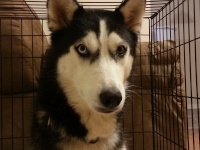
 Join date : 2012-11-26 Join date : 2012-11-26
Location : Clarksville, TN
 |  Subject: Re: Help Dog Attack! Subject: Re: Help Dog Attack!  Mon Nov 26, 2012 8:49 pm Mon Nov 26, 2012 8:49 pm | |
| What would have happened if she was armed and shot the dogs attacking? I'm only curious because this is my biggest scare as I have been attacked by a large dog walking my husky a long long time ago. |
|   | | Sponsored content
 |  Subject: Re: Help Dog Attack! Subject: Re: Help Dog Attack!  | |
| |
|   | | |
Similar topics |  |
|
| | Permissions in this forum: | You cannot reply to topics in this forum
| |
| |
| | Latest topics | » In search of my Cody’s bloodline
 by Cody sabastian Yesterday at 8:53 pm by Cody sabastian Yesterday at 8:53 pm
» My Old Girl is having trouble moving around…
 by aljones Mon Nov 18, 2024 3:23 pm by aljones Mon Nov 18, 2024 3:23 pm
» A day in the life
 by amymeme Mon Nov 18, 2024 3:11 pm by amymeme Mon Nov 18, 2024 3:11 pm
» Summer Time and the ....
 by Lostmaniac Fri Nov 15, 2024 12:30 am by Lostmaniac Fri Nov 15, 2024 12:30 am
» Squirt mystery illness and xrays
 by Lostmaniac Tue Nov 12, 2024 11:53 pm by Lostmaniac Tue Nov 12, 2024 11:53 pm
» The Desert Pack
 by Lostmaniac Thu Oct 31, 2024 2:19 am by Lostmaniac Thu Oct 31, 2024 2:19 am
» Dasuquin for the win!
 by Lostmaniac Mon Oct 28, 2024 9:09 pm by Lostmaniac Mon Oct 28, 2024 9:09 pm
» Hi new here
 by Lostmaniac Wed Oct 23, 2024 12:58 am by Lostmaniac Wed Oct 23, 2024 12:58 am
» Dog Attacked and Killed at Apex Park, Golden, CO
 by Lostmaniac Tue Sep 24, 2024 1:19 pm by Lostmaniac Tue Sep 24, 2024 1:19 pm
» Recall Information
 by aljones Tue Sep 24, 2024 11:20 am by aljones Tue Sep 24, 2024 11:20 am
» Whining after anesthesia
 by Lostmaniac Wed Sep 18, 2024 10:20 pm by Lostmaniac Wed Sep 18, 2024 10:20 pm
» Hello from Hiro
 by Lostmaniac Sat Sep 07, 2024 12:58 am by Lostmaniac Sat Sep 07, 2024 12:58 am
» Eye change help
 by amymeme Wed Sep 04, 2024 4:33 am by amymeme Wed Sep 04, 2024 4:33 am
» 2 year old Husky has mouth sores and patch on leg
 by Bigdog2 Sat Aug 10, 2024 12:48 pm by Bigdog2 Sat Aug 10, 2024 12:48 pm
» Why do other dog's dislike my husky?
 by Bigdog2 Fri Aug 09, 2024 10:38 pm by Bigdog2 Fri Aug 09, 2024 10:38 pm
» Need advice on best way to introduce new puppy to our 8 year old male husky
 by aljones Fri Aug 09, 2024 3:08 pm by aljones Fri Aug 09, 2024 3:08 pm
» Pending renewal or deletion
 by jbealer Thu Aug 01, 2024 1:35 pm by jbealer Thu Aug 01, 2024 1:35 pm
» Inflammatory Bowel Disease?
 by amymeme Wed Jul 31, 2024 3:34 pm by amymeme Wed Jul 31, 2024 3:34 pm
» URL Expiring. Do we renew?
 by ddvora Tue Jul 23, 2024 8:06 pm by ddvora Tue Jul 23, 2024 8:06 pm
» Hypothyrodism?
 by TwisterII Mon Jul 22, 2024 10:35 am by TwisterII Mon Jul 22, 2024 10:35 am
|
|






